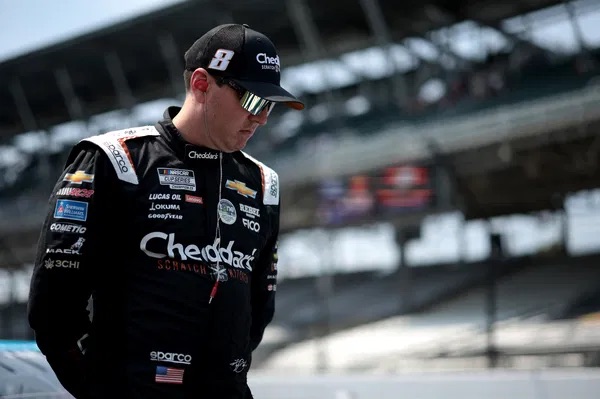Everyone is aware of the intense intensity and raw emotions of athletes, particularly motorsport drivers. When they feel wronged, they don’t hold back, and the competitive pressure frequently results in open communication. Consider the current event involving Max Verstappen. After being given a 10-second penalty for provoking a collision with Oscar Piastri of McLaren, the four-time Formula One champion didn’t hold back while calling the Abu Dhabi stewards “stupid idiots.” Verstappen made the comment after spinning both drivers at the first corner of the Yas Marina Circuit season finale. Similar circumstances arose during the 2025 Daytona 500, when Kyle Busch turned to X to vent his annoyance at NASCAR’s Damage Vehicle Policy (DVP).
“Parked by @nascar officials,” was the tweet he posted. According to the rule, you have three chances to reach the minimal speed. So far, the race has never gone back green. They don’t even seem to understand their own policies or processes. 🤬 Tommy Baldwin, the director of competition for Rick Ware Racing and the principal owner of Tommy Baldwin Racing, however, had a different viewpoint.
Tommy Baldwin analyzes the situation surrounding Kyle Busch
Bubba Wallace joined Tommy Baldwin, Karsyn Elledge, and Freddie Kraft on the Door Bumper Clear podcast this week to discuss the highs and lows of Daytona’s Speedweeks. The revised Damaged Vehicle Policy (DVP) was one of the main topics of discussion. They talked about its contentious effects on Kyle Busch’s race and final outcome in the Daytona 500 for Richard Childress Racing (RCR).
Tommy Baldwin offered important context for understanding the ramifications of the DVP. In particular, the modification that permits vehicles to return to the race after undergoing garage maintenance. “The car might have been towed to pit road last year, and you were on a seven-minute clock,” he clarified. Atlanta had an 8-minute clock, and you had seven minutes to fix it. He then emphasized the change from pit road’s time-bound repairs to the garage’s more relaxed repair procedure. In terms of how long repairs take, it implies the teams will have greater latitude but less responsibility. Additionally, Baldwin discussed the subtleties of the new method that ultimately contributed to Busch’s unsatisfactory outcome, stating, “He went out under caution and then came back in cause it was still problems, but still you went back out.” Freddie Kraft agreed, “So, he needed to stay out, stay out, make minimum, and then come back and work on it.”
Baldwin went on to say, “He could have gone on pit road, and no more, no more clock, no more anything, and worked on the car, if it made minimum speed.” Drivers and teams are still adjusting as NASCAR implements these changes for the 2025 season. Baldwin’s analysis emphasizes how these regulations can lead to frustrating circumstances even though their goal is to provide teams an equal opportunity. particularly in cases where procedural details, rather than driving skill, affect race results.
NASCAR defends its DVP in the face of stakeholder criticism
NASCAR remained steadfast in its defense of Kyle Busch’s disqualification ruling. Officials gave an explanation of the new DVP regulations’ rationale.
“A driver can only leave the garage once to reach minimum speed under DVP rules,” they explained. Busch was not permitted to return to the garage for more repairs since he left and never fulfilled the requirement. Refueling would have been the one exemption. To put it another way, Busch was unable to go back to the garage to do more maintenance. All because, after reentering the circuit under yellow, he failed to reach the required minimum speed. Looking ahead, the Ambetter Health 400 will present Busch with his next test. He is returning to the NASCAR CRAFTSMAN Truck Series in 2025 after Atlanta. The driver, who now has 66 Truck Series victories, will make a comeback to Spire Motorsports for a five-race campaign.
An exciting new chapter in Busch’s quest to return to his winning ways has begun with this move. However, Busch’s Daytona mishap has swiftly emerged as Speedweek’s most contentious issue. It poses an important query: Should NASCAR revise the DVP regulations to take caution periods into consideration? If Kyle Busch had three chances to hit the minimum speed, shouldn’t they have let him wait for the next green-flag lap before parking him? It makes sense that he is frustrated. To avoid another well-known driver suffering a similar fate, NASCAR could need to review the rule.

















































